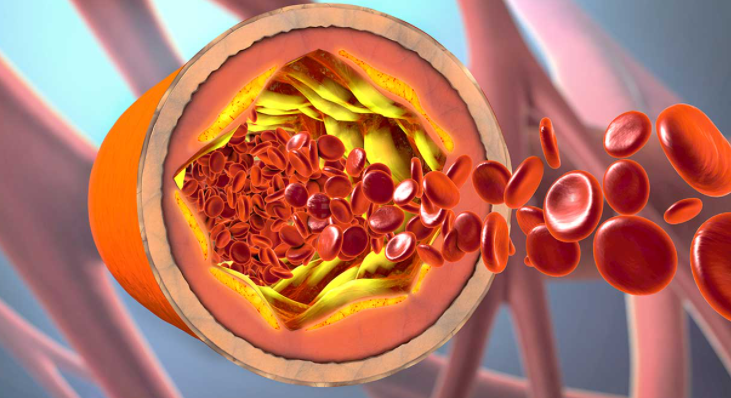Coronary artery disease occurs when the main blood vessels that supply your heart become damaged or diseased. Cholesterol (plaque) deposits in the coronary arteries and inflammation are usually the cause of coronary artery disease.
Coronary arteries carry blood, oxygen and nutrients to your heart. Plaque buildup can narrow these arteries and reduce blood flow to the heart. Finally, decreased blood flow may cause chest pain (angina), shortness of breath, or other signs and symptoms of coronary artery disease. Complete blockage can cause a heart attack.

Signs:
When the coronary arteries become narrow due to plaque formation, oxygen-rich blood flow to the heart is disrupted. Especially during periods when the heart rate increases, such as exercise, climbing stairs or any strenuous activity. Symptoms of a blocked artery will not be seen in the early years, but as plaque persists in patients, patients may develop the following signs and symptoms of coronary artery disease:
Chest pain (angina).
You may feel pressure or stiffness in your chest, as if someone is standing on your chest. This pain, called angina, usually occurs on the left or middle side of the chest. Angina is usually caused by physical or emotional stress. The pain usually goes away within minutes of stopping the stressful activity. In some people, especially women, the pain may be short or sharp and may be felt in the neck, arm or back.
Shortness of breath.
If your heart is not pumping enough blood to meet your body’s needs, you may experience shortness of breath or severe fatigue.
heart attack.
A completely blocked coronary artery causes a heart attack. The classic signs and symptoms of a heart attack include throbbing pressure in the chest and pain in the shoulder or arm, sometimes accompanied by shortness of breath and sweating.
Women are somewhat more likely than men to have the usual signs and symptoms of a heart attack, such as neck or jaw pain. And they may have other symptoms such as shortness of breath, fatigue and nausea.
Sometimes a heart attack occurs without any visible signs or symptoms.
Because coronary heart disease often develops over decades, you may not notice a problem until you have a significant blockage or heart attack. But you can take steps to prevent and treat coronary heart disease. A healthy lifestyle can make a big difference.

The most common cause of coronary artery disease is vascular damage to the inner layer of the coronary artery by plaque formation. This damage can be caused by various factors, including:
- Low mobility
Diabetes or insulin resistance
- High blood pressure
- High cholesterol
- smoking
Cardiac rehabilitation helps improve quality of life and prevent serious problems in the future, including controlling:
Physical activity and mobility
Healthy living education such as having a healthy diet (less salt and fat)
Taking medications to treat risk factors for coronary artery disease such as high cholesterol, high blood pressure or irregular heartbeat as prescribed by your doctor
Quit smoking
Counseling to find ways to reduce stress and improve people’s mental health
Talk to your doctor if you have risk factors for coronary heart disease – such as high blood pressure, high cholesterol, smoking, diabetes, obesity, or a strong family history of heart disease. Your doctor may want to test you for coronary artery disease, especially if you have signs of narrowing of the arteries.

